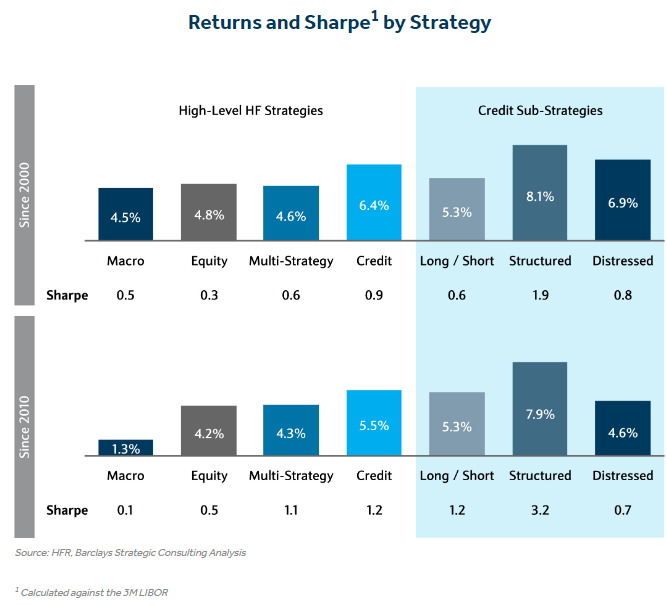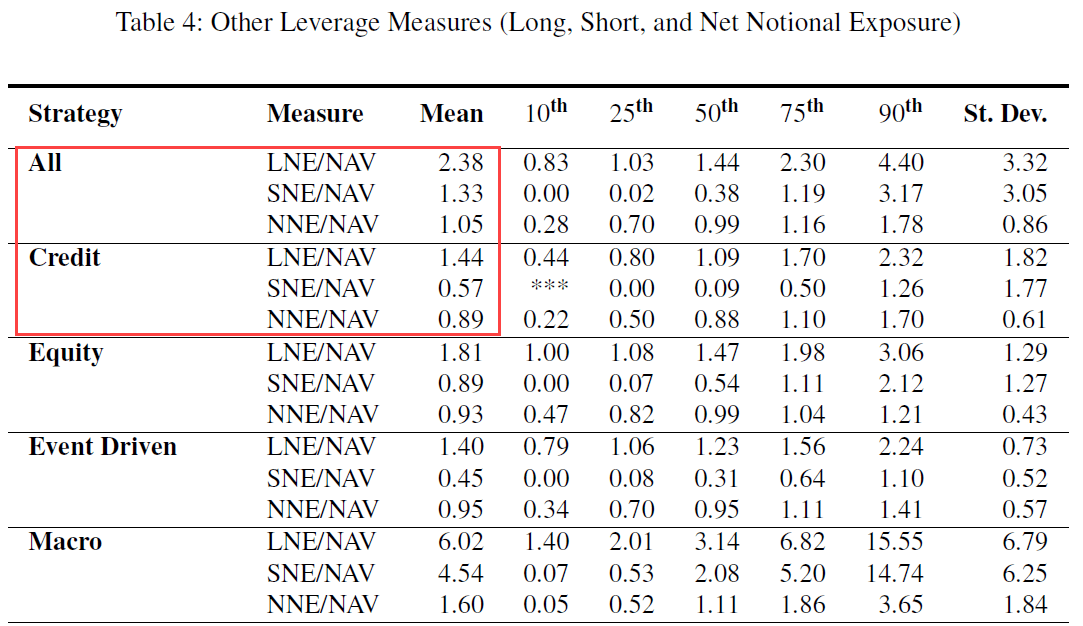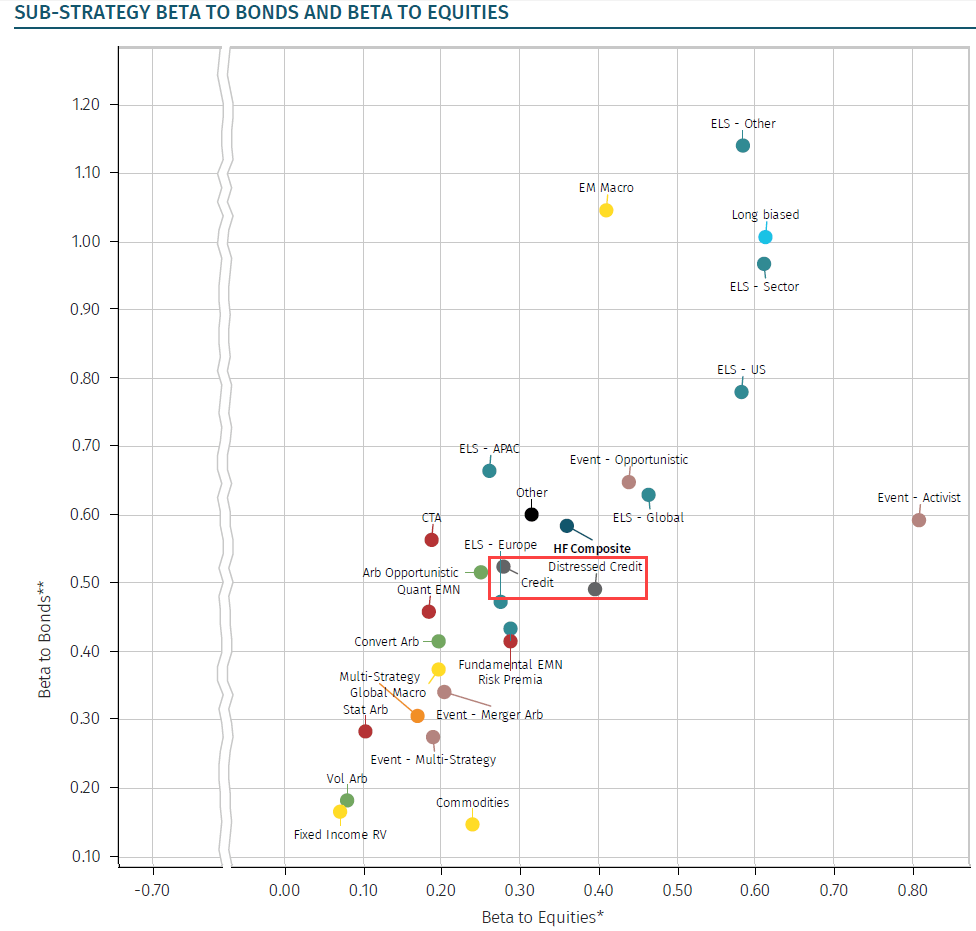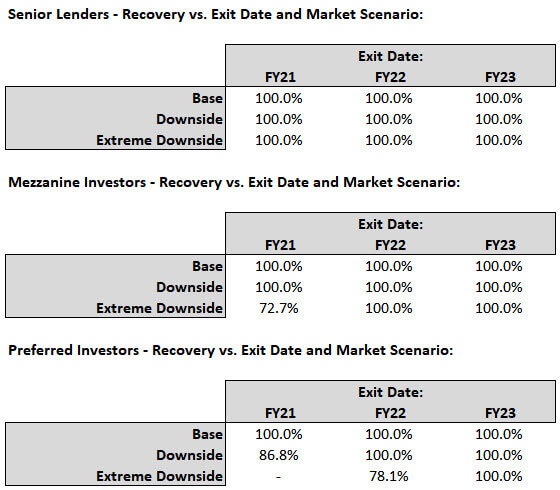Credit Hedge Funds: Full Guide to the Industry, Strategies, Recruiting, and Careers

Credit hedge funds might be the most consistently overlooked buy-side opportunity.
Anyone who’s ever traded stocks can understand long/short equity, and even simple global macro trades are easy to explain to the average person.
But if you invest in credit and try to explain your job to a normie, their eyes will glaze over as you talk about credit default swaps, crossover credits, or the springing maturity date found on page 374 of a loan agreement.
This complexity and the need to understand legalese mean that credit investing is less accessible to the average person.
But if you have the right knowledge and experience, credit hedge funds can provide a great career path:
What is a Credit Hedge Fund?
Credit Hedge Fund Definition: Credit hedge funds buy and sell fixed-income securities, such as high-yield bonds, distressed bonds, structured credit, and their derivatives; they profit by setting up trades that reduce one type of credit risk while betting on mispriced securities whose prices are likely to change in the future.
This definition already feels difficult to understand, so a quick example might help.
The simplest example of a long/short credit trade is to long one bond and short a similar bond issued by a peer company.
In other words, you buy one bond to earn the interest it pays and sell it if/when its price increases, and you borrow another bond, sell it, pay the interest coupons to the counterparty, and buy it back if/when its price decreases.
Let’s say that Target has a bond with an 8% Yield to Maturity, i.e., you earn an internal rate of return (IRR) of 8% if you buy the bond at its current market price and hold it until maturity.
Walmart, a peer company, has a similar bond, but its YTM is only 5%, even though the terms, seniority, and maturity are similar.
So, you long the Target bond and short the Walmart bond.
You’ll earn interest on the Target bond and will have to pay interest on the Walmart bond.
You could close out this trade in several ways:
- Hold Until Maturity – Assuming that neither company defaults and the 3% spread does not change, even if overall interest rates do, you’ll earn an annualized return equal to the YTM of Target Bond – YTM of Walmart Bond – Short Sale Costs.
- Sell/Buy When Prices Change – For example, maybe company-specific factors result in the YTM of the Target bond falling to 6%, meaning its market price has increased. The Walmart bond’s YTM is still 5%, so its market price is the same. You could now sell the Target bond and buy the Walmart bond to close your short position, and you would profit based on the initial spread, the increase in the Target bond’s market price, and the short sale costs.
This may not sound like a great result because it’s less than a ~3% annualized return.
But you can boost the results with leverage, and if the price change in the second scenario happens over a few months, it might result in a much higher return.
You might also look at this trade and say, “Wait a minute. Why would you short the Walmart bond? Wouldn’t you earn more simply by longing the Target bond to get the 8% yield?”
Yes, you would earn more in a favorable credit environment (falling rates), but this trade aims to hedge one type of credit risk.
The three traditional credit risks are default risk, credit spread risk, and illiquidity risk, and with structured credit, there’s also default correlation risk.
With this trade, even if overall interest rates change, meaning that both bonds’ market prices change, we’re still fine as long as the spread stays at 3%.
We’re betting that company-specific factors will change each bond’s price.
If we purchased the Target bond without shorting the Walmart bond, we would be exposed to company-specific and interest-rate risk: if overall interest rates rose, the bond’s market price would fall.
There are hundreds of possible credit trades, but a few simple examples include:
- Synthetic Long/Short – You make the same trade as above, but you use credit default swaps instead of the underlying bonds. You profit if you can sell protection on one bond for a higher price than you pay for protection on the other bond.
- Long a Longer-Term Bond and Short a Shorter-Term Bond – For example, if Target has a 10-year bond with an 8% YTM and a 5-year bond with a 4% YTM, you could long the 10-year bond and short the 5-year bond and bet that longer-term yields will remain above shorter-term yields.
- Long a Credit Pool and Short Specific Tranches – For example, you could long a mortgage-backed security pool but bet against specific tranches by shorting them or using CDS.
Types of Credit Hedge Funds
To simplify, we can say that credit hedge funds operate in three main areas:
- Long/Short Credit – It’s similar to long/short equity, but with bonds rather than stocks. See the example above.
- Structured Credit – Now you’re buying or selling pools of similar debt obligations rather than single securities or derivatives. See the Structured Finance article for more; subcategories include mortgage-backed securities (MBS), asset-backed loans (ABL), and collateralized loan obligations (CLO).
- Distressed – The main difference is that the range of possible outcomes is much wider; similar to distressed private equity, a hedge fund could trade the distressed bonds, or it could use them to gain influence or control eventually.
Here’s how Preqin divided up the credit hedge fund universe (old data but still directionally correct):

“Investment-grade bonds” are not an explicit category because it’s much harder to find significantly mispriced securities in that space.
Besides these categories, we can divide most credit hedge funds into trading vs. investing.
- “Trading”-Focused Funds: These trade more-liquid credits, hold more positions (50-100+), use shorter holding periods, and use more leverage to amplify their returns. Often, they aim to profit from macro moves such as changing interest rates while hedging company-specific risk.
- “Investing”-Focused Funds: These trade less-liquid credits, hold fewer positions (perhaps 10-15), and use longer holding periods. These funds tend to favor distressed or stressed bonds and attempt to profit via fundamental changes in the issuer’s credit profile while hedging interest-rate risk.
Credit hedge funds share some traits with direct lenders, mezzanine funds, and distressed private equity firms, but they also differ in important ways:
- Primary vs. Secondary Issuances – Direct lenders and mezzanine firms fund companies directly, i.e., they purchase their debt when the company issues it at the issuance price. But credit hedge funds usually purchase bonds in the secondary market after the prices have changed significantly, and they bet on changes in these prices.
- Flexibility – Most direct lenders and mezzanine funds operate in a “loan to own” mentality, where the goal is to hold an issuance until maturity or change of control. By contrast, credit hedge funds can do almost anything, from long-term holding to long/short trades to complex trades involving derivatives.
- Security Types – Other credit firms tend to focus on specific types of fixed income, such as mezzanine. Even distressed PE firms focus on the “fulcrum security” (the one most likely to be converted into equity in a bankruptcy process). But credit hedge funds could trade almost any type of credit.
There is a good amount of overlap between distressed hedge funds and distressed private equity firms.
The main difference is that PE firms are more likely to pursue control strategies that result in significant equity stakes or to gain influence in the restructuring/bankruptcy process.
What Makes Credit Hedge Funds Different?
This article from Barclays has some useful graphs, and the one with returns from 2000 – 2019 and 2010 – 2019 sums up the advantages of credit funds quite well:

In terms of other criteria/features:
1) Liquidity – This one varies by the trading vs. investing distinction, but credit hedge funds tend to offer less liquidity and longer lock-up periods than strategies like equities and global macro (but less so than activist investing).
2) Time Horizon – It could be days/weeks/months for trading-style funds or multiple years for funds that focus on distressed bonds.
3) Low-to-Moderate Leverage – The average credit fund uses far less leverage than a global macro fund and a bit less than the average equity fund.


Finally, credit funds tend to incur higher startup costs and require a higher AUM than other fund types because of the extra employees and outside services required.
For example, to process and check loan documents efficiently, you’ll have to pay for covenant-review services or lawyers.
So, if you are crazy enough to start a hedge fund, a credit fund is not exactly “DIY-friendly.”
The Top Credit Hedge Funds
Almost all the large hedge funds and private equity mega-funds are active in credit.
So, you’ll see well-known names like Ares, Elliott, Oaktree, and Cerberus at or near the top of most lists.
Many of these funds do everything from direct debt origination to specializations in areas like non-performing loans (NPLs).
If you want a list of smaller hedge funds that are known for their credit investing, here it is: Anchorage (now partially shut down), Angelo Gordon, Arbour Lane, Avenue, Bracebridge, Brigade, Canyon, Capula, Centerbridge, GoldenTree, Gramercy, Ellington, King Street, Magnetar, MJX, Saba, Silver Point, Symmetry, and Varde Partners.
Some firms on this list, like Saba, are more trading-oriented, while others, like Canyon, take more of a fundamental / “deep value” approach.
Who Gets Into Credit Hedge Funds?
To win offers at credit hedge funds, you need experience analyzing, trading, or investing in debt. In practice, that means:
- Any investment banking group that does a lot of debt issuances, including many industry groups and Leveraged Finance, but probably not DCM (less analysis).
- Credit research, either on the sell-side or the buy-side.
- Certain trading desks, such as rates trading or distressed debt.
- Credit rating agency experience.
- And, in theory, other credit-related roles such as direct lending, mezzanine, and distressed private equity.
Here are the most common backgrounds I found when looking up professionals currently working at credit hedge funds on LinkedIn:
- Investment Banking: 37%
- Sales & Trading: 23%
- Other Hedge Fund / Asset Management Roles: 23%
- Investment Banking + Private Equity: 7%
- Credit Rating Agency: 7%
- Research: 3%
If you have a trading background, you’ll be competitive for trade execution roles at investing-oriented funds and possibly for investment roles if you target a strategy like relative value or fixed-income arbitrage.
Otherwise, if you want to work at research/investing-oriented firms, you’re better off in a credit-heavy IB group or as a credit desk analyst in S&T doing the research.
I could not find many direct examples of people who worked in roles like direct lending and mezzanine and then joined credit hedge funds, but it seems possible if you target the right strategies.
It might just be that people in these roles are more interested in traditional private equity.
Interviews, Case Studies, and Credit Pitches
You can expect questions similar to the ones in a LevFin, DCM, or Restructuring interview, but they’ll be framed in terms of your views as an investor.
For example, they might ask you to explain a credit’s strengths and weaknesses and whether or not you would invest based on limited information.
They could also ask you why different credits might trade differently despite similar profiles.
For example, why might Bond A have a 10% YTM with an 8% coupon rate while Bond B has a 9% YTM with a 10% coupon rate if they have the same ranking in the capital structure?
The most obvious answer is different maturities, but liquidity/size (smaller issuances are less liquid), call protection, or different covenants might also explain this.
It also helps to know about CDS, options, and various credit indices (the BofA High-Yield Index, the LCDX, the LSTA 100, etc.) so you can use them to construct trade ideas.
Finally, especially for research-oriented funds, you should know the terms in credit agreements very well, ranging from covenants and change-of-control clauses to “Restricted Payment” (RP) baskets. There’s a good summary here.
For open-ended case studies (they tell you to find a company and credit), the easiest strategy is to do the following:
- Read up on significant events that might act as catalysts, such as potential M&A deals, management shakeups, divestitures, and asset sales, and see if the companies in question have debt. You can search sources like the WSJ or FT to get ideas. Start with “potentially troubled companies” rather than specific issuances.
- Do a quick debt analysis, focusing on senior notes through the mezzanine and preferred stock. If you don’t see a potential mispricing (e.g., the YTM on two bonds is similar even though one is subordinated to the other), move on. Otherwise, keep going.
- Create several simple scenarios, such as what happens to the bonds if the company refinances successfully vs. its business declines and it can’t refinance vs. the company gets sold in an M&A deal. For distressed companies, you can consider alternatives like a debt-for-equity swap, liquidation, or DIP financing.
- Use the output of the scenarios to argue that one or more of the company’s bonds is mispriced and could change in the future due to the catalysts you found in Step 1. For example, you could argue that in a standard refinancing or debt-for-equity swap, Bond A is undervalued by 15-20%; investors would lose money only in a full liquidation, which is extremely unlikely.
Recovery analysis will be a key part of almost any case study because you always focus on the chances of losing money in credit recommendations (example below for real estate):

You could easily have a “good business / bad credit” case or a “bad business / good credit” case, and you must be able to articulate why, such as a large value gap between first-lien and second-lien loans.
Credit Hedge Fund Careers
Not much in this section is specific to credit hedge funds, but I will point out a few differences:
- Schedule / Lifestyle – Expect the standard 60-70 hours per week at hedge funds, with longer hours during earnings season or “busy issuance season.” The need to follow new debt issuances and not just corporate earnings can make your average hours longer, especially at trading-oriented funds.
- Team / Culture – Credit investing tends to be more of a “team sport” than other strategies because you often depend on other groups for data and pricing information, and you may even hire an outside firm to review loan documentation. And if you’re a trader, you depend on the research team to dig into companies’ filings.
- Moving Around Within Credit – It’s easier to move from distressed to high-yield or structured credit than to do the reverse, and it’s far easier to move from distressed to investment-grade than to do the reverse.
Exit Opportunities
As with other hedge funds, reverse the entry points to determine the exit opportunities.
If you leave a credit hedge fund, you could move into many other credit-related roles, from direct lending to mezzanine to the credit platforms at the mega-funds.
You could potentially even go back to a role at a large bank, but few people do that willingly.
It’s more useful to point out the unlikely exit opportunities.
First, you probably don’t have a great shot at private equity unless you’ve already worked in it – or you’ve worked at a distressed fund, and now you’re aiming for distressed PE funds.
Some credit analysis is involved in private equity, but everything tends to be more process-oriented and geared toward long-term holding.
Second, you don’t position yourself very well for roles at normal companies, such as corporate development and corporate finance, because the skill sets are not related.
Finally, credit hedge fund roles are unlikely to lead to venture capital; even something like venture lending is a stretch because the analysis and deal work is quite different.
For Further Learning
- The Handbook of Fixed Income Securities – The Fabozzi classic; still useful for learning/reviewing the fundamentals.
- Leveraged Finance: Concepts, Methods, and Trading of High-Yield Bonds, Loans, and Derivatives – More useful for trading.
- Distress Investing – If you’re more advanced (written by a famous distressed investor and a professor).
- Distressed Debt Analysis – The classic Moyer guide.
- Corporate Financial Distress, Restructuring, and Bankruptcy – For an overview of everything.
- com for good-but-expensive credit data; you can follow their Twitter account for free webinars and case examples.
- The Distressed Debt Investing Blog – No longer actively updated, but the older information and examples are all still useful.
Credit Hedge Funds: The Final Verdict
I don’t think credit hedge funds are the best choice for everyone, but they are one of the more overlooked areas.
Part of the problem is that many courses give the impression that credit analysis is “boring” because the examples mostly deal with investment-grade bonds.
But high-yield bonds, distressed bonds, and structured credit are significantly more complex.
And although you focus on credit analysis, you need to understand entire companies and have views on entire capital structures, which means the job also involves equity analysis.
You can also get into the industry from many different roles, so it’s less restrictive than something like activist hedge funds or even global macro.
Some people also argue that the “pay ceiling” at the top levels is lower than at other fund types due to lower fees, higher overhead, and more predictable performance, but I could not find much real data to back up that claim.
And even if it were true, I don’t think the pay differences would matter much after a 10 or 15-year career.
So, I think the biggest issue with credit funds is accessibility.
It’s extremely difficult to “learn” how to read a long loan document independently, and it’s not viable to trade most bonds in your personal account because the denominations being traded are quite large.
So, you normally have to get real-world experience in credit and use that to move in.
But if you can do that, credit hedge funds might offer one of the best career paths.
Want more?
If you liked this article you might be interested in Commodity Hedge Funds: The Most Lucrative “Hidden Gem” in Finance?.
Free Exclusive Report: 57-page guide with the action plan you need to break into investment banking - how to tell your story, network, craft a winning resume, and dominate your interviews
Comments
Read below or Add a comment




Do you believe working at a credit hedge fund is a better, equal, or worse experience than working at a quant equity fund, macro fund, or multi-manager fund? Does compensation differ much at a credit fund relative to the other funds mentioned above?
The main advantage of credit over the others you mention is that it’s less specialized than a quant or macro fund, so you could, in theory, get other credit-related roles more easily afterward. So it is “better” in that sense. The day-to-day work depends completely on your skills and preferences, so I can’t answer that for you. Multi-manager vs. single-manager is a different question because credit funds and groups could exist at both fund types. This issue is more about whether you prefer short-term trading or longer-term investing.
Compensation depends mostly on fund size and performance, not strategy. So I don’t think there is a big compensation difference (though I’ve never seen reliable data for average compensation by fund type/strategy).
What are your thoughts on both Funds? Do you think there will be more and more Quant Funds over Credit Funds or Fundemental Funds on the market? Or it’s half and half?
I don’t have a strong view, sorry. Quant was in favor for a while, but lost some of its luster in the covid years as quant strategies underperformed. Sentiment around quant vs. fundamental funds tends to shift back and forth over time based on recent performance stats.
Would you be able to give a concise pros & cons for a long term career at a credit hedge fund vs. in private credit (direct lending, mezz, distressed etc)?
PC tends to be slower paced with less burnout, although comp is also longer term. HFs are fast paced and higher pressure on a day to day basis, but with potentially much higher annual payouts – anything else to consider?
Those are the main trade-offs. Another one is that private credit arguably gives you better exit opportunities, or at least broader ones, whereas credit HFs are more specialized. You could move around within private credit firms and even back to roles like PE/IB more easily than you could go from a credit HF to one of those. But not sure it’s a massive difference, more of a modest one.
Is the career path to credit hedge funds similar to that of other fixed income funds like Gundlach’s Doubleline or Pimco?
Yes, but one big difference is that the compensation ceiling tends to be much lower at places like PIMCO because fees are lower and they do not focus on the types of higher-risk/potential return bonds that most credit HFs do. Also, IB experience probably helps less for those types of funds. I haven’t done a detailed search, but many people who get in have previous AM experience or credit experience elsewhere.
Thanks for the great article. It would be greatly helpful to learn about work/life/career path within large fixed income AM (Like PIMCO, etc.) Feel like very little information is out there.
Thanks!
Do you have any resources about who the main Credit HFs are & their strategies? I found it it’s hard to actually identify who is a distress vs HY vs structured focus fund in the space.
I’ve never found anything like this. You can look up well-known credit funds pretty easily (and there is a partial list here under “Top Credit Funds”) but they never break out the percentage of headcount or AUM dedicated to different strategies within credit. Other than going to each firm’s site or looking on Preqin, HF recruiters might actually be a decent option here for finding some of these funds if you have a very specific idea of what you want.
Would credit analysts be able to join a long/short equity fund after they exit?
Depends on what type of credit they covered. Investment-grade to equity would be difficult, but stressed or distressed is doable since some equity analysis is required in those.